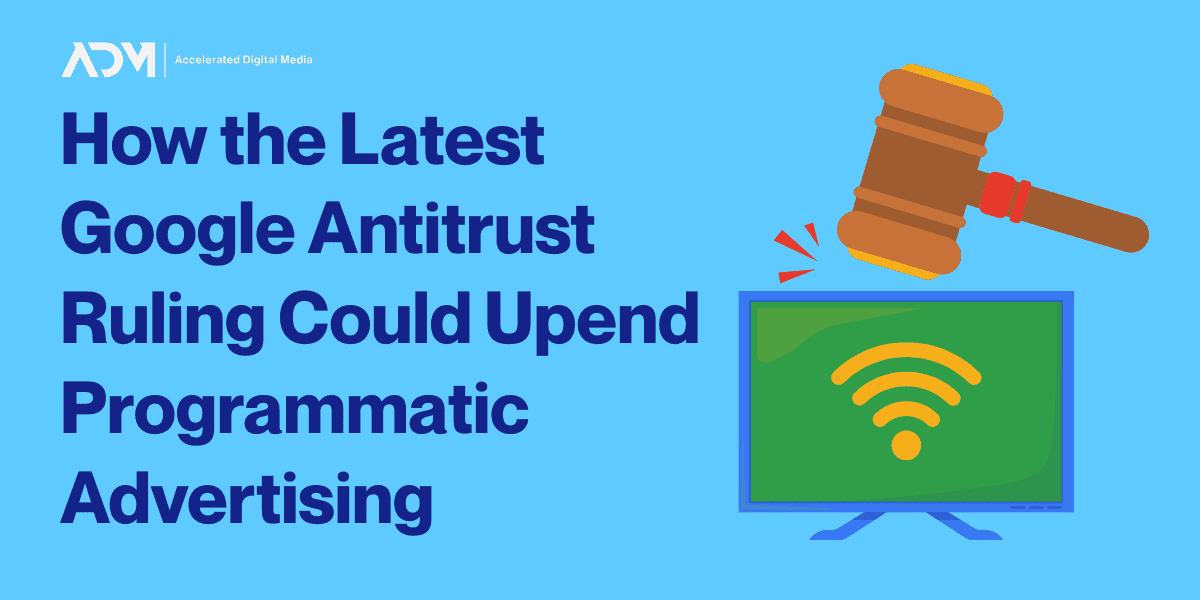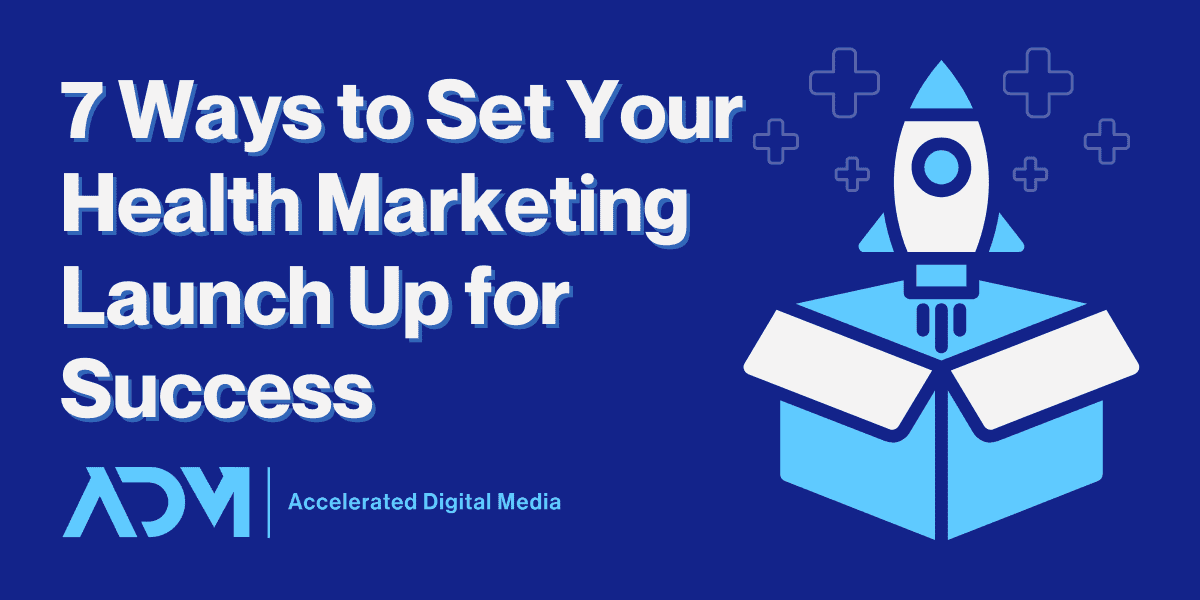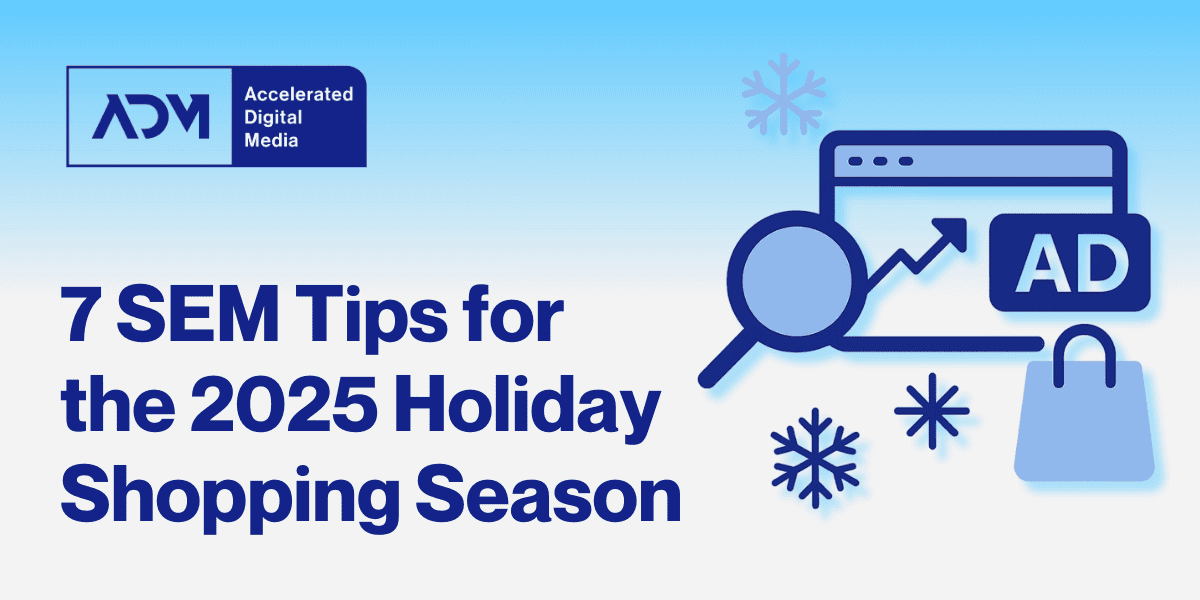Digital marketing may feel like an established industry to insiders, but in the eyes of regulators, it’s still relatively new terrain. Laws can’t predict the rise of powerful advertising technologies and the companies that offer them. So when oversight enters the picture, it can cause significant disruption—and it may be that time again.
A recent antitrust case from the Department of Justice (DOJ) accuses Google of monopolizing digital advertising, claiming the company controls roughly 87% of the advertising technology ecosystem. While the number may be debatable, the company’s preeminence in our industry is not. But the penalties at hand won’t just disrupt Google Ads and SEM: They may also have huge implications for programmatic advertising.
Google’s Dominance Over Digital Advertising
In addition to its preeminence in paid search advertising, Google also has dominance over online display advertising. That gives it enormous power over how ads are distributed and how money flows through the ecosystem.
Online advertising relies on three core components:
- Tools for publishers to offer space for ads
- Platforms for buyers to bid on and purchase those placements
- An exchange that facilitates transactions between buyers and sellers
Google not only has an enormous market share: It also owns all three of these levers in the form of Google Ads and the Google Display Network, including the AdX exchange. The DOJ alleges that this vertical integration raises concerns about fairness and competition. Google is theoretically in a position where it can set the average market prices for those transactions. And were one publisher to find itself in conflict with Google, the DOJ asserts that the digital giant could siphon traffic away from those publications and send it to other sites, hurting their business.
A federal judge agreed with that argument, ruling that Google could not wield this amount of power over online advertising. As a result, DOJ is now seeking remedies that would require Google to divest from some of its advertising technology holdings—that conversation will continue later this year.
What Does This Mean for Programmatic Advertising?
If Google is forced to relinquish some of its adtech holdings, it could upend the pecking order in programmatic advertising from top to bottom. That may create some uncertainty—but also a lot of opportunity for smaller players in the space to become more relevant.
From a day-to-day perspective, this should be manageable for most experienced programmatic advertising teams. While many rely on Google’s Display and Video 360 platform to purchase ads, and many others leverage outside demand side providers (DSPs) to purchase on Google’s exchange, the existing ecosystem is much larger than what Google controls.
There are numerous other companies that handle the exchange of ads and revenue from publishers and buyers, and this ruling could open a door for them. Platforms like OpenX, PubMatic, Xandr, and Magnite may become much larger players in this space as advertisers flock to new options. For advertisers who are reliant on Google AdX may need to actively begin working with additional exchanges to maintain continuity.
Based on the type of ad you’re running (display, native, connected TV, etc.) there are often dozens of different networks that can facilitate ad buys—and savvy programmatic buyers should already be transacting across more than just the Google landscape. But those who aren’t will need to continually monitor their reach and costs if Google’s inventory begins to decline.
Do Other Ad Exchanges Offer Advantages Over AdX?
The answer here is: sort of.
AdX is a holdover from a previous generation of programmatic advertising, which was predominantly focused on the sorts of display ads and pop ups that have been ubiquitous for decades. As additional placements such as In-App, Connected TV, and out-of-home digital billboard placements have become standard, those have been added on as additional placements using the same legacy management methodology. It’s still an effective suite—it wouldn’t have huge market share if it wasn’t—but it’s not the lone option.
Newer and smaller exchanges have been designed specifically to deploy the latest programmatic ad styles—Magnite and Cadent TV, for instance, are key disruptors in the space. These companies entered the programmatic space from the TV side to fill a need. They approached transacting from the perspective of TV-first inventory, essentially aiding cable companies to allow self-service ad buying.
As user behavior has shifted towards video-first consumption, display ads are no longer the tentpole asset: Over-the-air/Connected TV ads are, with display ads now used primarily as a bolt-on for retargeting. If Google’s grip over the technology diminishes, it could open the door for innovative smaller companies (like those mentioned) to innovate better and more competitive advertising offerings.
How Will Advertisers Need to Adjust?
Industry upheavals like this underscore the importance of diversifying your ad coverage. Media mixes are becoming more complex and advertisers rely on more and more touchpoints to cut through the noise. Brands who rely on specific platforms because they or their advertising partners are only skilled with those platforms are going to run into issues. If you’re solely reliant on AdX or any other single platform, app, or provider, you’re setting yourself up for trouble—so you’ll need a new plan.
Google and the federal government are scheduled to meet again and discuss remediation in September, but that doesn’t mean there’s time to wait. If you’re currently focusing all (or a vast majority) of your programmatic efforts on AdX, it’s worth familiarizing yourself with alternatives, ensuring your advertising team has the capabilities they need to shift spend if need be.
Because building out an alternative plan that you’re confident in can take time, this might even mean you begin testing spend on alternative platforms now. If you’re unsure whether this industry change will impact your business, ask your marketing partner sooner rather than later—or seek a second-opinion audit from an expert digital marketing agency.
This isn’t dissimilar to what’s going on with TikTok’s uncertain future. The popular social media platform may leave the US market entirely—or it could be acquired by a company like Amazon and thus absorbed into Amazon’s existing advertising ecosystem. Still, brands have been wise to increase investment on YouTube Shorts and Instagram Reels to keep utilizing the vertical, short-form video style no matter what becomes of the app that popularized it.
While Google is still Google, the landscape is broad—and things can change quickly. Brands need to position themselves proactively rather than scrambling once the ground shifts.
What Comes Next?
As mentioned, the next movement in this case should come towards the end of Q3 2025. We expect that, in the meantime, there may be a shift in volume away from Google towards the independent ad exchanges as firms look to get in place ahead of any deadlines or systemic changes, which should begin to drive down CPMs. We recommend monitoring CPMs closely, breaking reporting down by medium as much as you can to get to publisher/exchange information.
This suit is just one of a few legal challenges Google is currently facing. It has also been ruled to have illegally monopolized the search engine market, dominating the field while making anti-competitive deals to lock in its search engine as the default on various devices. DOJ has suggested Google may have to sell its Chrome browser, among other potential remedies.
The scrutiny isn’t just domestic. The European Union is also investigating whether the Google Play Store’s practices run afoul of the EU’s Digital Markets Act—though it actually has as much to do with Google’s ownership of the Android operating system. It ties into the first and second points, in that if Google can limit which apps you can download and how they’re downloaded, that power theoretically extends to everything that is being done on a user’s phone—and that combination of monitoring and influence can be leveraged for advertising. The company is also facing billions in fines in Europe for similar antitrust issues.
All of these cases continue to underscore the importance of awareness and readiness in digital marketing. The same way you don’t plan for holiday promotions the night before they happen, you shouldn’t be viewing potential disruption in the industry as a wait-and-see scenario.
We’re in an era of heightened volatility, driven by everything from trade agreements to artificial intelligence to new legal challenges like these. The single most important thing an advertiser can do is align with a media buyer that’s platform agnostic, understands the broader ecosystem and has relationships with as many vendors as possible. If you’re looking for one of those—or just interested in learning more about how these industry changes could impact your business—don’t hesitate to reach out to the ADM team below:




